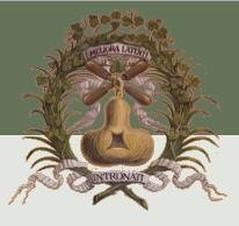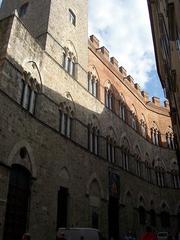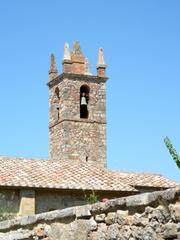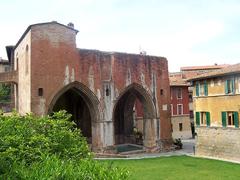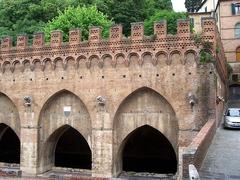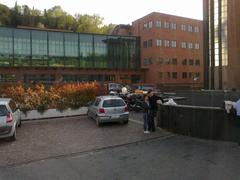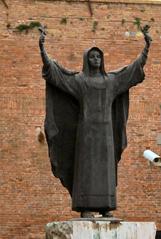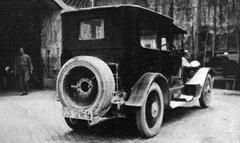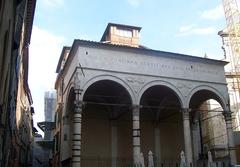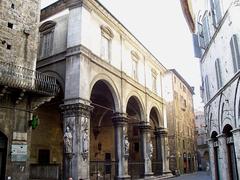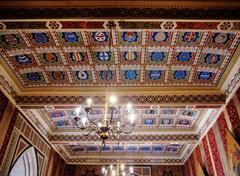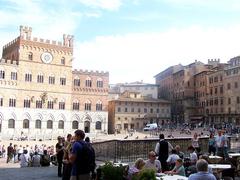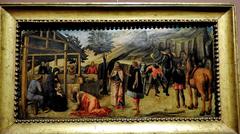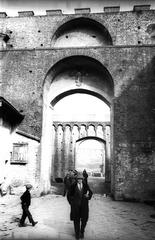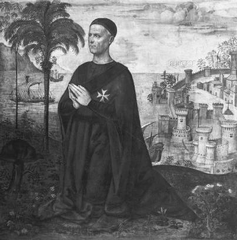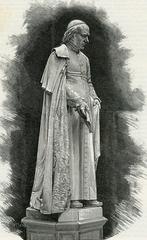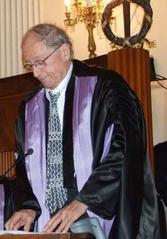
Accademia dei Fisiocritici Siena: Comprehensive Visiting Guide, Tickets, and Historical Highlights
Date: 04/07/2025
Introduction
Nestled in the heart of Siena, Italy, the Accademia dei Fisiocritici is one of Europe’s oldest scientific academies and a unique cultural destination. Founded in 1691 by Pirro Maria Gabbrielli, it unites centuries of scientific discovery, natural history, and regional heritage within the evocative setting of a former Camaldolese monastery. The Academy’s museum features impressive collections in geology, zoology, anatomy, botany, and archaeology—highlighted by an iconic 15-meter whale skeleton, rare anatomical specimens by Paolo Mascagni, and artifacts connecting Siena’s traditions to the natural world.
Beyond its museums, the Accademia remains a vibrant hub for research, education, and community outreach, continually hosting exhibitions, workshops, and citizen science projects. Its renowned library and historical archive preserve over 36,000 volumes and numerous manuscripts, offering insights into the evolution of scientific thought through three centuries.
Whether you’re a science enthusiast, history lover, family traveler, or simply seeking a rewarding cultural experience in Tuscany, this guide will provide essential information on visiting hours, ticketing, accessibility, guided tours, travel tips, and nearby Siena attractions. For the most current details and digital resources, consult the Accademia dei Fisiocritici official website and related platforms such as Google Arts & Culture.
Begin your journey through Siena’s scientific and cultural legacy at the Accademia dei Fisiocritici—where history, nature, and innovation converge (Musei Senesi, Visit Siena Official).
Table of Contents
- Introduction
- History of the Accademia dei Fisiocritici
- Scientific and Cultural Significance
- Visiting Information
- Museo di Storia Naturale dell’Accademia dei Fisiocritici
- Nearby Siena Attractions
- FAQs
- Summary and Final Tips
- References
History of the Accademia dei Fisiocritici
Founding and Early Development (1691–18th Century)
Established in 1691 by the distinguished physician and professor Pirro Maria Gabbrielli, the Accademia dei Fisiocritici drew inspiration from the scientific revolution and the experimental method. Its name—derived from Greek for “critics of nature”—reflects its mission to advance knowledge through observation and inquiry. Early activities included public experiments, such as demonstrations with a vacuum pump inspired by Robert Boyle, and the publication of the Academy’s journal “Atti dell’Accademia,” which fostered intellectual exchange and scientific rigor (Google Arts & Culture).
The Monastery and Napoleonic Era Transformation
The Academy is housed in the historic Monastero della Rosa, a former Camaldolese monastery. This structure, with its distinctive bell-gable and cloister, was acquired by the Academy in 1816 after confiscation during the Napoleonic reforms. The adaptation of the monastery’s spaces enabled the expansion of scientific meetings, public lectures, and the permanent display of collections (Google Arts & Culture).
Growth of Collections and the Museum (18th–19th Century)
Throughout the 18th and 19th centuries, the Academy’s collections expanded with contributions from local and international scholars. Notable additions included Tuscan fossils, minerals, and zoological specimens. The museum’s exhibits were meticulously organized, reflecting European trends of the time. In 1862, the Academy showcased local mineral waters at the 10th Congress of Italian Scientists, a testament to its scientific and civic engagement.
Scientific and Cultural Significance
For over 300 years, the Accademia dei Fisiocritici has advanced scientific knowledge and critical thinking in Siena. Its emblem, the touchstone, symbolizes a commitment to distinguishing truth from superstition. The Academy’s influence extends through public education, scholarly publications, and notable figures such as Paolo Mascagni, whose anatomical research remains a highlight of the museum. Today, the neoclassical Main Hall continues to host conferences, exhibitions, and cultural events.
Visiting Information
Visiting Hours
- Tuesday to Sunday: 10:00 AM – 6:00 PM
- Closed: Mondays and public holidays
Ticket Prices
- Adults: €8
- Reduced (students, seniors): €5
- Children under 12: Free
Check the official website for special openings and updates during holidays or events.
Accessibility and Facilities
- Wheelchair Access: Ramps and elevators serve most areas, though some sections of the historic building may pose challenges.
- Restrooms: Accessible facilities available.
- Languages: Exhibit labels are mostly in Italian, but digital guides and virtual tours offer multilingual support.
Guided Tours & Events
- Guided Tours: Available on weekends and by appointment for groups, in Italian and other languages upon request.
- Special Events: The Academy regularly hosts exhibitions, workshops, and interactive demonstrations (e.g., vacuum pump experiments, citizen science activities).
Visitor Tips
- Photography: Permitted without flash.
- Duration: Allow at least 1–2 hours for a thorough visit.
- Nearby Cafés: Numerous options for sampling Tuscan cuisine nearby.
- Combine Visits: Plan to visit adjacent landmarks such as Piazza del Campo or Siena Cathedral.
Museo di Storia Naturale dell’Accademia dei Fisiocritici
Historical Setting & Architecture
The museum occupies the former Camaldolese monastery of Santa Mustiola, a 12th-century building organized around a central cloister. Its most spectacular exhibit—the 15-meter whale skeleton—hangs prominently in the courtyard, symbolizing the Academy’s dedication to natural history (Musei Senesi, Visit Siena Official).
Museum Organization and Collections
Geological Section
- Extensive fossils from the Val d’Orcia and Asciano
- Minerals and rocks representing Tuscan geological diversity
- Historic pigments known as “Terre di Siena” (Terre di Siena)
Zoological Section
- Hundreds of taxidermy animals, skeletons, and preserved specimens
- Renowned ornithological collection, including birds donated by Baron Bettino Ricasoli
- The whale skeleton as the museum’s centerpiece
Anatomical Section
- Anatomical preparations by Paolo Mascagni, highlighting the lymphatic system
- “Francesco Spirito” collection with petrified anatomical specimens
- The first full-size human anatomical atlas
Botanical Section
- Terracotta mushroom models from the “Francesco Valenti-Serini” collection
- Rare and ancient botanical specimens
Archaeological Section
- Etruscan cinerary urns in a reconstructed hypogeum
- Artifacts bridging natural history and Siena’s archaeological legacy
Library and Historical Archive
The Academy’s library holds approximately 36,000 volumes, including rare books from the 16th century and global scientific periodicals. The historical archive preserves centuries of manuscripts, correspondence, and institutional records crucial to understanding the development of science in Siena (Visit Siena Official, Fisiocritici Official).
Notable Curiosities
- Half coconut cup attributed to Napoleon Bonaparte
- Specimens of “red rain,” a meteorological oddity
- Malformed animals and historic scientific instruments
Modernization and Digital Resources
- Digitized collections and online catalogs
- Museum app, touchscreen displays, and digital frames
- Virtual tours and audioguides via Google Arts & Culture
Nearby Siena Attractions
The Academy is centrally located, making it easy to explore the city’s other landmarks:
- Piazza del Campo: Medieval square and site of the Palio horse race
- Siena Cathedral (Duomo): Masterpiece of Gothic architecture
- Palazzo Pubblico: City hall with historic frescoes
- Pinacoteca Nazionale di Siena: Sienese art collection
- Sant’Agostino: Historic Gothic church
Frequently Asked Questions (FAQs)
Q: Is the museum suitable for children and families?
A: Yes, with engaging exhibits and educational workshops for all ages.
Q: Are there audio guides or virtual tours?
A: Yes, available via the museum app and online platforms.
Q: Is the museum accessible?
A: Most areas are accessible, but some limitations exist due to the historic structure.
Q: Are guided tours available?
A: Offered in Italian and other languages upon request.
Q: Can I participate in workshops or citizen science events?
A: Yes, check the event calendar or inquire at the entrance.
Summary and Final Tips
The Accademia dei Fisiocritici stands as a testament to centuries of scientific innovation and cultural heritage in Siena. With its rich collections—spanning geology, zoology, anatomy, botany, and archaeology—complemented by a distinguished library and vibrant event calendar, the Academy offers an immersive experience for scholars, families, and travelers alike. Its central location makes it ideal for combining visits to Siena’s other historical sites.
For current visiting hours, ticketing, and event updates, consult the official website, Google Arts & Culture, and the Museo di Storia Naturale dell’Accademia dei Fisiocritici. Consider enhancing your visit with the Audiala app for interactive guides and event notifications.
References
- Accademia dei Fisiocritici on Google Arts & Culture
- Musei Senesi – Natural History Museum
- Visit Siena Official – The Natural History Museum of the Accademia dei Fisiocritici
- Museo di Storia Naturale dell’Accademia dei Fisiocritici

